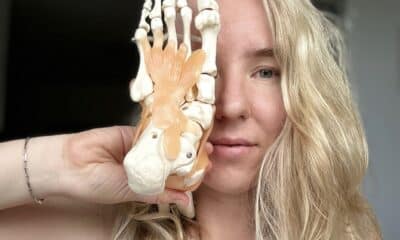Why Your Doctor Might Overlook Spider Veins and What Specialists Know That Can Help You
When patients finally choose to consult a spider vein specialist, many are astounded by how the evaluation process differs from a conventional visit to a primary care physician. The contrast lies not in general medical knowledge, but in the depth and specificity of focus. Specialists trained in venous disorders comprehend the subtle indicators, hidden patterns, and initial red flags that are often overlooked during standard checkups.
Vein & Wound Experts located in Downey, California, has earned a reputation for identifying underlying venous issues long before they escalate into serious complications. This meticulous approach stems from advanced diagnostic experience and an unwavering attention to details that surpass the focus of standard examinations.
Hidden Circulatory Clues Specialists Detect First
Most physicians can visually identify spider veins, but their deeper origins are frequently missed by non-specialists. A dedicated venous examination goes beyond surface discoloration to assess how blood circulates through both the superficial and deep venous systems.
Specialists are attuned to subtle signs that may indicate early venous insufficiency, such as slight temperature variations, irregular skin texture, or mild swelling that seems unrelated to vascular issues. These observations help to ascertain whether spider veins are mere cosmetic issues or possibly the initial indicators of a developing circulatory disorder.
The Role of Venous Pressure and Microcirculation
Another facet often overlooked by general practitioners is microcirculation—the efficiency with which oxygen and nutrients are transported through the smallest blood vessels. Even minor disruptions can result in sensations like leg heaviness, tingling, and early pigmentation changes that precede visible vein damage.
A specialist interprets these symptoms as part of a broader pattern. They measure localized venous pressure with non-invasive tools and compare these readings to expected norms. Abnormal findings prompt early interventions before the condition deteriorates into chronic venous insufficiency.
Why Detailed Ultrasound Diagnostics Change Everything
While most physicians rely solely on visual assessments, a spider vein expert incorporates duplex ultrasound into their diagnostic process. This imaging technique reveals information that is not visible to the naked eye:
– whether faulty valves are causing blood to flow backward.
– how efficiently blood returns toward the heart.
– the condition of deeper veins that support surface networks.
Because symptoms often do not correspond to the severity of underlying issues, ultrasound frequently uncovers conditions that a standard evaluation might miss entirely.
Skin Signals That Are More Serious Than They Look
Changes in skin condition around the ankles and lower legs can serve as early indicators of venous problems. A specialist is well-equipped to interpret these changes with greater accuracy:
1️⃣ Unusual dryness or itchiness – often mistakenly attributed solely to dermatological issues but may indicate reduced venous oxygenation.
2️⃣ Slight discoloration of the skin – typically misidentified as minor irritation, yet it can reflect blood pooling beneath the skin.
These initial markers guide treatment options and help prevent potential long-term skin damage.
How Lifestyle Patterns Reveal Venous Stress
While a primary care physician may inquire about daily habits, a specialist delves into how specific movements affect venous return. Professions requiring extended periods of standing, repetitive lifting, or sedentary behavior can create micro-stresses that gradually weaken vein walls.
Such specialists view these lifestyle patterns through the lens of vascular health, leading to targeted recommendations that address the root causes—such as strategies for calf-pump activation, ergonomic workplace adjustments, or tailored compression therapies.
When Symptoms Don’t Match the Visual Appearance 👀
Many patients present with minimal visible spider veins while experiencing discomfort, such as aching or a heavy sensation in their legs. Frequently, general practitioners attribute these symptoms to fatigue or muscle tension.
Conversely, a venous specialist understands that discomfort absent significant surface veins may indicate early valve dysfunction in deeper vessels. Recognizing this disconnect is crucial for preventing the progression of circulatory issues and future complications.
Why Early Intervention Matters More Than Cosmetic Improvement
Many dismiss spider veins as mere cosmetic concerns, particularly physicians outside vascular medicine. However, specialists recognize these veins as significant indicators of vascular health. Timely treatment can avert progression toward varicose veins, swelling, inflammation, and enduring skin changes.
That’s why institutions like Vein & Wound Experts prioritize comprehensive evaluation and personalized care over quick, generic procedures.
What This Deeper Evaluation Means for Patients in California
A thorough venous assessment not only addresses visible spider veins but also provides patients with insight into their overall vascular condition. For those in areas like Downey, where active lifestyles and lengthy commutes add extra strain, professional evaluation holds even greater importance.
Patients experience:
• more accurate diagnoses
• earlier detection of hidden issues
• personalized treatment plans that preempt future complications
This approach fosters long-term vein health rather than merely focusing on temporary cosmetic fixes.
📍 Address
11525 Brookshire Ave suite 402
Downey CA 90241
📞 Call Us
(562) 309-4900
🕒 Office Hours
Monday – Friday
9:00 a.m. – 5:00 p.m.
Website – veinandwound.com















